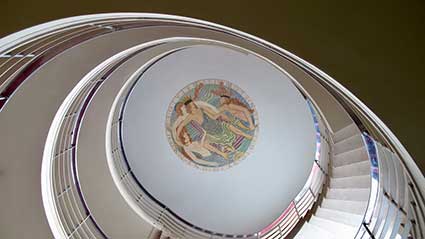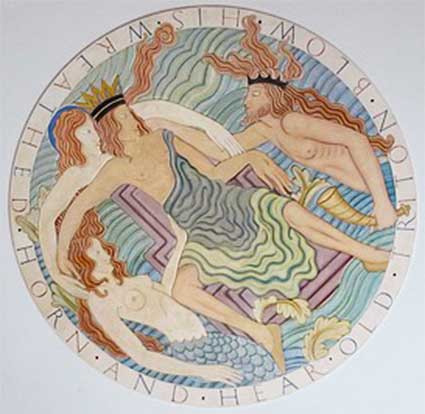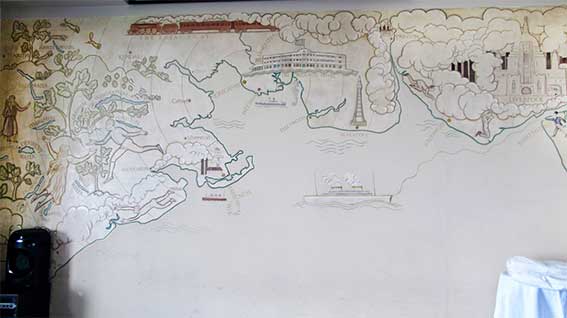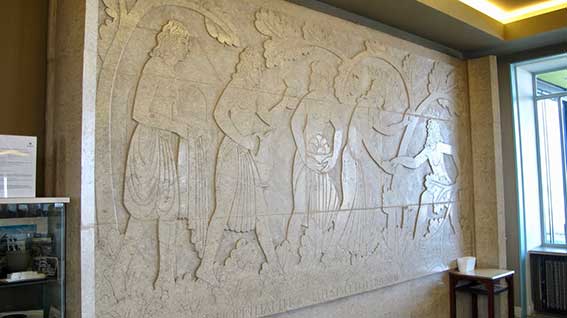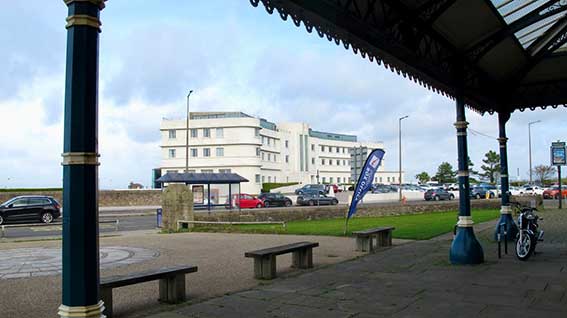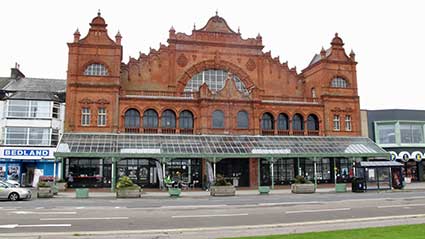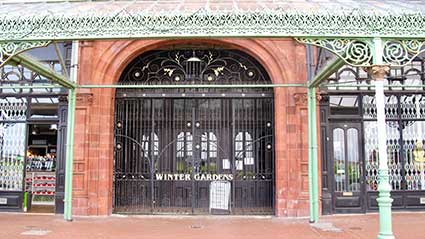‘THERE IS GOOD HOPE THAT THOU MAYEST
SEE THY FRIENDS’
followed by 'Homer/Ody'
in smaller capitals. This is repeated above in Greek with 'Eric G'
added. All the art works in the hotel were restored and/or recoloured
during the hotel's renovation between 2005 and 2008.
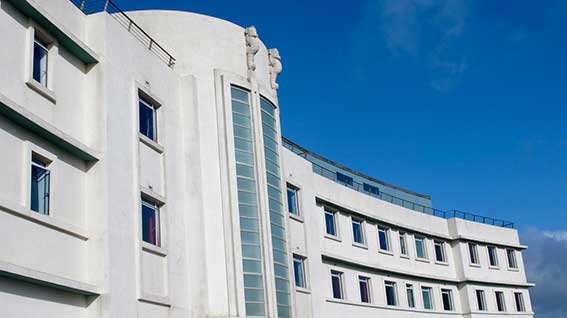 Above: the two Gill seahorses high above the hotel
entrance.
Above: the two Gill seahorses high above the hotel
entrance.
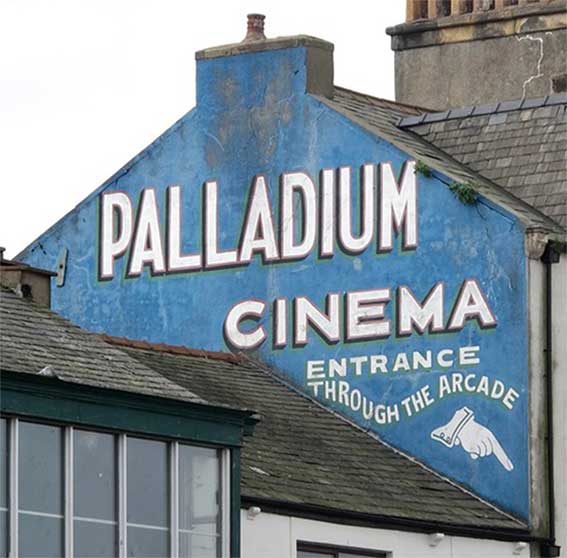
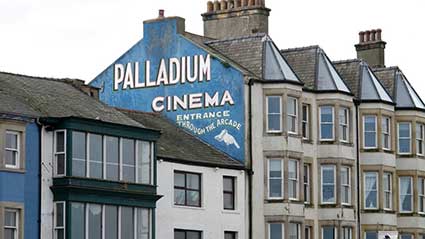 All
2022 images courtesy David Gaylard
All
2022 images courtesy David Gaylard
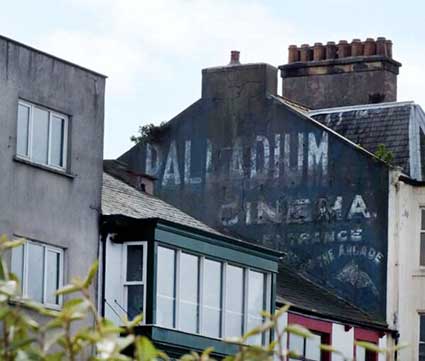 Pre-2014 photograph courtesy Kate Drummond
Pre-2014 photograph courtesy Kate Drummond